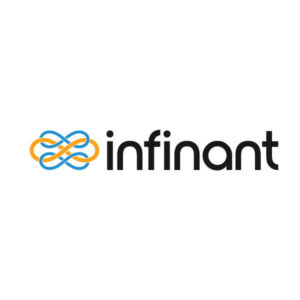 A Q&A with Flow co-founder and CEO Eric Alterman. The New York City–based company was founded in early 2010.
A Q&A with Flow co-founder and CEO Eric Alterman. The New York City–based company was founded in early 2010.
SUB: Please describe Flow, and the value proposition you bring to app development.
Alterman: The key long-term value proposition for the Flow is all about data sharing—how can many apps—web, mobile and enterprise—easily and seamlessly share real-time data. For the first time, apps will be capable of connecting and sharing real-time data with one another on a permissioned basis, bringing unprecedented interoperability across the app landscape. We believe data interoperability will drive next generation apps in ways even more powerful than social connectivity. A restaurant mobile app, for example, may show food-seekers nearby eateries, but would also draw and present helpful data from other apps on local stores, coupon deals or events.
By building the infrastructure through which apps can intercommunicate and consumers can create and discover information micro-contextually, the Flow intends to break down many existing data silos—the goal is to revolutionize the way businesses and people make use of real-time data. Connecting apps socially was an important first step in the data revolution, connecting apps on a more fundamental data level is what we believe is next. So the Flow aims to be the underlying plumbing for this new frontier of application connectivity, providing developers a seamless way to connect their apps with real-time data from many other apps, analogous to what a stock exchange does for trading.
Along with data sharing, the platform also empowers developers with an instant and robust backend for application data, stream processing and data aggregation, which boosts efficiency and lowers costs of implementing real-time data systems for apps. By abstracting the often difficult and expensive integration process, Flow enriches individual apps’ functionality and enables developers to build real-time data-rich applications faster, better, and cheaper.
Flow will additionally provide developers and consumers the opportunity to buy and sell subscriptions of real-time data with the upcoming launch of Flow Market—we expect the launch to happen in January or February of 2012. Flow Market invites content owners to control business rules and monetize all types of data streams, ranging from curated topical flows like product reviews, to proprietary research. The Flow believes there is a ‘data graph’ that is just as interesting as the ‘social graph’, but richer from a data perspective and includes the universe of data that goes beyond the social context.
SUB: Who is your target market?
Alterman: The Flow will initially target enterprise clients looking to manage, process and share their data streams in an increasingly real-time world. We will also target individual developers, particularly mobile app developers who can use the platform in a self-serve fashion. The use cases include data sharing, app interoperability, interoperability, analyzing ‘signals’ from real-time data, and on-demand stream processing.
SUB: Who do you consider to be your competition, and what differentiates Flow from the competition?
Alterman: There are examples of companies that allow a seamless sharing of data on an industry level—e.g. SimpleGeo for location or MLS for real estate—but none that provide a broad ‘data exchange’—buy, sell or share—for any type of real-time data, and any data structure. Others are not real-time by nature—rather, a publish and subscribe architecture. Equally important, no other platforms combine this capability with the kind of stream processing—stream aggregation, filtering, transforms, data structuring—provided by the Flow platform to make all this real-time data useful and actionable.
SUB: When was the company founded and what were the first steps you took to establishing it?
Alterman: The company was founded in January 2010, and it began with me assembling my usual legal team, accounting team and seed stage investors—people close to me that invest in most things I do. But the idea itself is something I have been thinking about for four years conceptually. The founding began when I found the right co-founder, my CTO, Tom Luczak, to begin mapping my concepts to specific technology choices—and our process of building out our technical team—the best I’ve ever worked with.
SUB: What was the inspiration behind the idea for Flow? Was there an ‘aha’ moment, or was the idea more gradual in developing?
Alterman: There were several ‘aha’ moments. The first was when I began thinking about one of my previous startups, MeshNetworks, an ad hoc wireless networking company that I founded in 1999, acquired by Motorola. Mesh was all about allowing data to route in intelligent ways such that devices that had no signal could backhaul through other devices to get to a base station. My ‘aha’ was thinking that there was an analogous type of data routing that could make the sharing of data easier between many mobile and web apps, instead of wireless signals. Several other of my previous startups also informed the Flow concept.
SUB: What have the most significant obstacles been so far to building the company?
Alterman: The Flow is a very serious and sophisticated platform, not a simple app that can be thrown together in a few months and released. The Flow platform has been built over 20 months by a team of very talented engineers—that’s a long development cycle. Our challenge was to visualize the product and execute on a long roadmap prior to getting real-world feedback. Fortunately, we seemed to have guessed right, now that we’re finally inviting the outside world in, but there was plenty of risk. The good news with this type of strategy is that it will take time for even large technology companies to duplicate our work.
SUB: You recently closed a $3 million seed funding round. How are you using/how do you plan to use those funds?
Alterman: Our focus has been and will remain technology development—that’s our competitive advantage. So, while we’ll spend some money on biz dev and marketing, the lion’s share of our funding will remain on engineering talent.
SUB: Why was it a good time to raise outside funding?
Alterman: Data sharing, real-time systems, cloud PaaS, and stream processing have risen to the top of nearly everyone’s must have list of technologies, so I think we’re in a fortunate position that way in terms of fund raising. As a company, the timing was right to begin scaling our team and getting the word out.
SUB: Do you plan to raise additional outside funding in the near future?
Alterman: We do, but it’s all about finding the right institutional investors who understand the scope of our mission, which is very ambitious. Connecting people socially has been the last five years, connecting apps socially is what’s been happening in recent months, but the future is all about apps connecting with each other on a more fundamental data level—seamless interoperability will define next generation consumer and enterprise experiences. We are looking for investors who are deeply committed to fully exploiting that value proposition.
SUB: What are your goals for Flow over the next year or so?
Alterman: Our most ambitious technology goal is to launch the Flow Market within the first few months of 2012. The current version of our platform supports seamless, real-time data sharing between many apps, stream processing and data aggregation. The Flow Market introduces a true exchange—analogous to a stock exchange—that enables the buying and selling of real-time data. In terms of traction, our goal is to have all mobile, web and enterprise developers aware of our platform’s capabilities—we have confidence that developer adoption will quickly follow. We also hope to establish our service through channel partners like Amazon, Rackspace, Salesforce, Oracle, Dell, HP, VMware, Microsoft and various military contractors.
Flow – www.iflow.com











